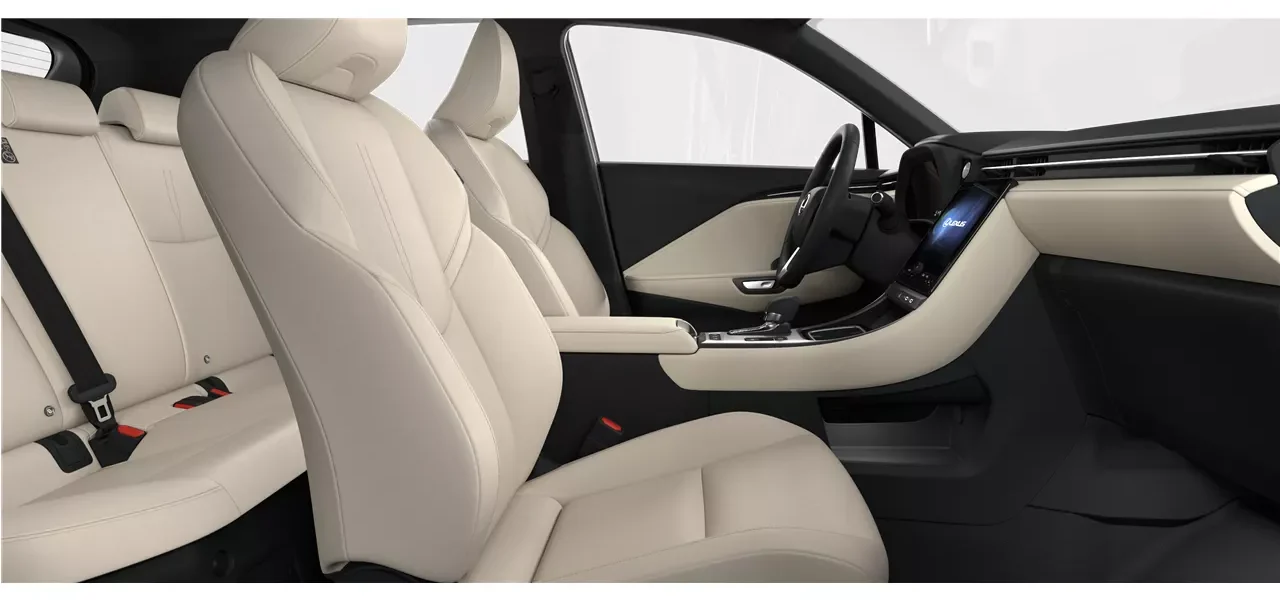Maintaining a clean car interior is essential for both aesthetics and hygiene. Many cleaning products promise effective results, but it’s crucial to understand their suitability for different surfaces. One common household cleaner, 409, is often considered for various cleaning tasks, but its use on car interiors requires careful consideration. This article will explore the potential risks and benefits of using 409 on your car’s interior and offer safer alternatives for a sparkling clean vehicle.
Understanding 409 and Its Ingredients
409 is a popular all-purpose cleaner known for its grease-cutting and disinfecting properties. However, the active ingredients can be harsh on certain materials.
Here’s a quick look at some key ingredients:
- Surfactants: Help to loosen dirt and grime.
- Solvents: Dissolve grease and oil;
- Disinfectants: Kill bacteria and viruses.
Risks of Using 409 on Car Interiors
While effective on some surfaces, using 409 on car interiors can pose several risks. Consider these potential problems before applying it to your vehicle.
The following table outlines the potential risks associated with using 409 on different car interior surfaces:
| Surface | Potential Risk |
|---|---|
| Dashboard | Discoloration, cracking, fading. |
| Leather Seats | Drying out, staining, cracking. |
| Fabric Seats | Staining, discoloration, stiffening. |
| Carpets | Discoloration, fading. |
Why is 409 Harmful to Car Interiors?
The harsh chemicals in 409 can strip away protective coatings and natural oils, leading to damage and premature aging of interior components.
Fact: Many car interior materials are specifically designed to resist staining and fading, and using harsh chemicals like 409 can compromise these protective properties.
Safer Alternatives for Cleaning Car Interiors
Fortunately, there are many safer and more effective alternatives for cleaning your car’s interior. These options are specifically formulated to protect and enhance the materials used in your vehicle.
Consider these alternatives for a safe and effective clean:
- Automotive-Specific Cleaners: These are designed for car interiors and are pH balanced to protect surfaces.
- Microfiber Cloths: Excellent for wiping down surfaces without scratching.
- Vacuum Cleaner: Removes loose dirt and debris from carpets and upholstery.
- Mild Soap and Water: A gentle solution for cleaning most surfaces.
FAQ: Using 409 on Car Interiors
Here are some frequently asked questions about using 409 on car interiors to help you make informed decisions.
Q: Can I use 409 on my leather seats?
A: No, it’s strongly discouraged. 409 can dry out and crack leather. Use a leather-specific cleaner and conditioner instead.
Q: Is it safe to use 409 on my dashboard?
A: It’s not recommended. 409 can cause discoloration and fading on dashboards. Use an interior detailer designed for dashboards.
Q: What should I do if I accidentally used 409 on my car interior?
A: Immediately wipe it off with a clean, damp cloth and then apply a protectant or conditioner appropriate for the surface.
Q: Can I use 409 on my car’s carpets?
A: While it might remove some stains, it can also cause discoloration. Test a small, inconspicuous area first and rinse thoroughly with water.
Q: What is the best way to clean my car’s interior?
A: Vacuum regularly, wipe down surfaces with a microfiber cloth and automotive-specific cleaner, and address stains promptly with appropriate cleaning solutions;
Maintaining a clean car interior is essential for both aesthetics and hygiene. Many cleaning products promise effective results, but it’s crucial to understand their suitability for different surfaces. One common household cleaner, 409, is often considered for various cleaning tasks, but its use on car interiors requires careful consideration. This article will explore the potential risks and benefits of using 409 on your car’s interior and offer safer alternatives for a sparkling clean vehicle.
409 is a popular all-purpose cleaner known for its grease-cutting and disinfecting properties. However, the active ingredients can be harsh on certain materials.
Here’s a quick look at some key ingredients:
- Surfactants: Help to loosen dirt and grime.
- Solvents: Dissolve grease and oil.
- Disinfectants: Kill bacteria and viruses.
While effective on some surfaces, using 409 on car interiors can pose several risks. Consider these potential problems before applying it to your vehicle.
The following table outlines the potential risks associated with using 409 on different car interior surfaces:
| Surface | Potential Risk |
|---|---|
| Dashboard | Discoloration, cracking, fading. |
| Leather Seats | Drying out, staining, cracking. |
| Fabric Seats | Staining, discoloration, stiffening. |
| Carpets | Discoloration, fading. |
The harsh chemicals in 409 can strip away protective coatings and natural oils, leading to damage and premature aging of interior components.
Fact: Many car interior materials are specifically designed to resist staining and fading, and using harsh chemicals like 409 can compromise these protective properties.
Fortunately, there are many safer and more effective alternatives for cleaning your car’s interior. These options are specifically formulated to protect and enhance the materials used in your vehicle.
Consider these alternatives for a safe and effective clean:
- Automotive-Specific Cleaners: These are designed for car interiors and are pH balanced to protect surfaces.
- Microfiber Cloths: Excellent for wiping down surfaces without scratching;
- Vacuum Cleaner: Removes loose dirt and debris from carpets and upholstery.
- Mild Soap and Water: A gentle solution for cleaning most surfaces.
Here are some frequently asked questions about using 409 on car interiors to help you make informed decisions.
Q: Can I use 409 on my leather seats?
A: No, it’s strongly discouraged. 409 can dry out and crack leather. Use a leather-specific cleaner and conditioner instead.
Q: Is it safe to use 409 on my dashboard?
A: It’s not recommended. 409 can cause discoloration and fading on dashboards. Use an interior detailer designed for dashboards.
Q: What should I do if I accidentally used 409 on my car interior?
A: Immediately wipe it off with a clean, damp cloth and then apply a protectant or conditioner appropriate for the surface.
Q: Can I use 409 on my car’s carpets?
A: While it might remove some stains, it can also cause discoloration. Test a small, inconspicuous area first and rinse thoroughly with water.
Q: What is the best way to clean my car’s interior?
A: Vacuum regularly, wipe down surfaces with a microfiber cloth and automotive-specific cleaner, and address stains promptly with appropriate cleaning solutions.
Tips for Maintaining a Clean Car Interior
Beyond just cleaning, regular maintenance can significantly extend the life and appearance of your car’s interior. Small, consistent efforts can make a big difference.
Here are some additional tips to keep your car interior in top shape:
- Regular Vacuuming: Vacuuming at least once a month helps prevent the buildup of dirt and debris that can grind into carpets and upholstery.
- Use Sunshades: Protect your dashboard and seats from harsh sunlight, which can cause fading and cracking.
- Prompt Spill Cleanup: Address spills immediately to prevent staining. Blot the area with a clean cloth and use an appropriate cleaner.
- Condition Leather Regularly: Leather seats require regular conditioning to stay supple and prevent cracking.
- Air Fresheners: Use air fresheners to keep your car smelling fresh and clean. Choose scents that are not overpowering.
The Importance of Professional Detailing
For a truly deep and thorough clean, consider professional car detailing. Detailers have the expertise and equipment to address even the most stubborn stains and grime.
Here’s why professional detailing can be beneficial:
| Benefit | Description |
|---|---|
| Deep Cleaning | Professionals use specialized equipment and techniques to remove embedded dirt and grime. |
| Protection | Detailing often includes applying protectants to surfaces, helping to prevent future damage. |
| Expertise | Detailers have the knowledge and experience to safely clean a wide range of materials. |
| Convenience | Saves you time and effort while ensuring a high-quality result. |
Remember, the key to a long-lasting and beautiful car interior is consistent care and the use of appropriate products. Avoid harsh chemicals like 409, and prioritize gentle cleaning methods and regular maintenance. Doing so will protect your investment and ensure a comfortable and enjoyable driving experience for years to come. Taking a proactive approach not only keeps your car looking its best, but also contributes to a healthier and more pleasant environment inside your vehicle.


